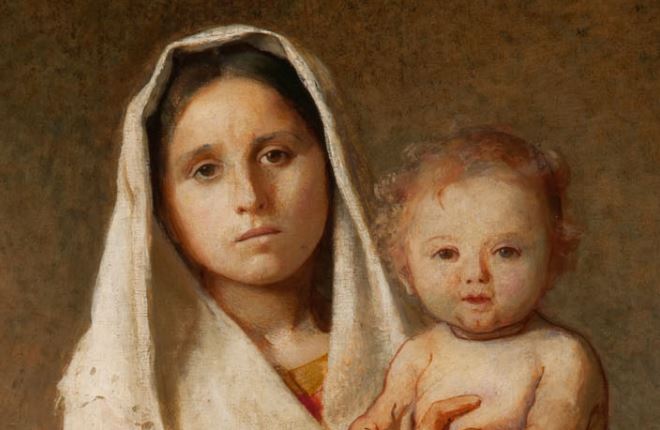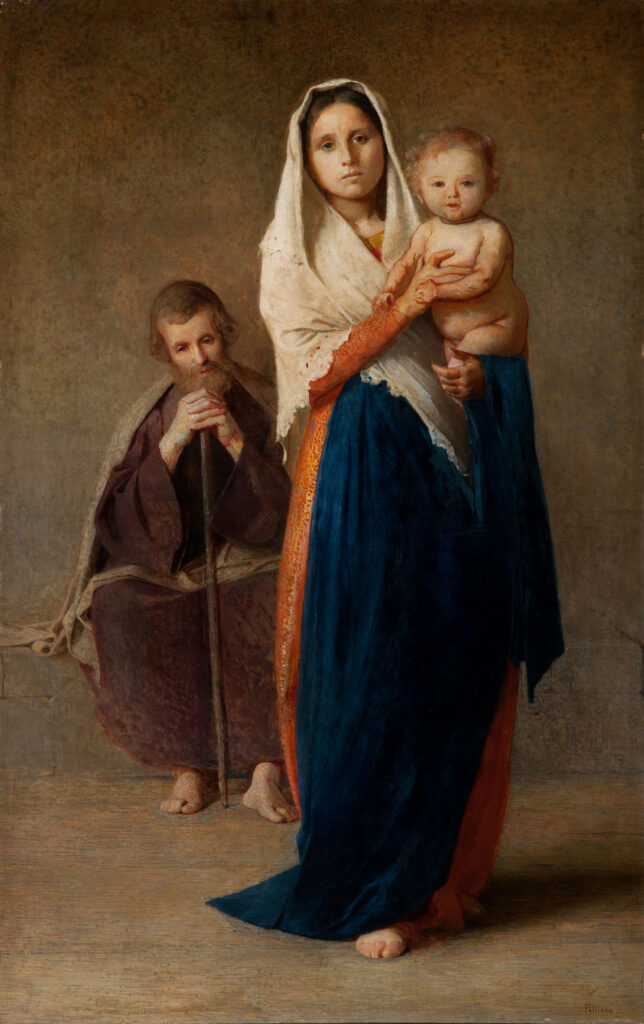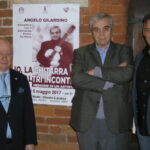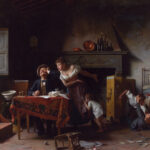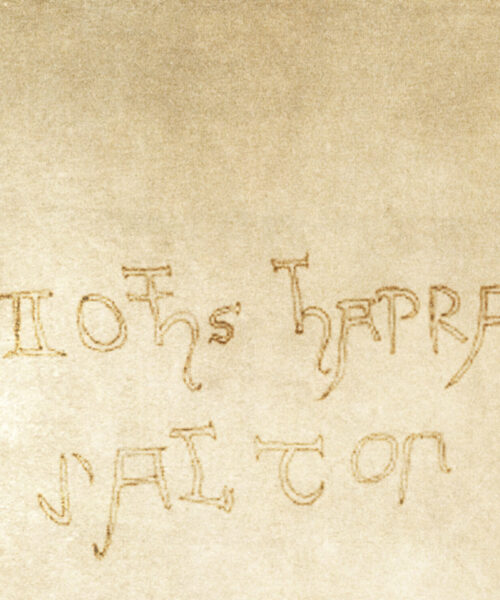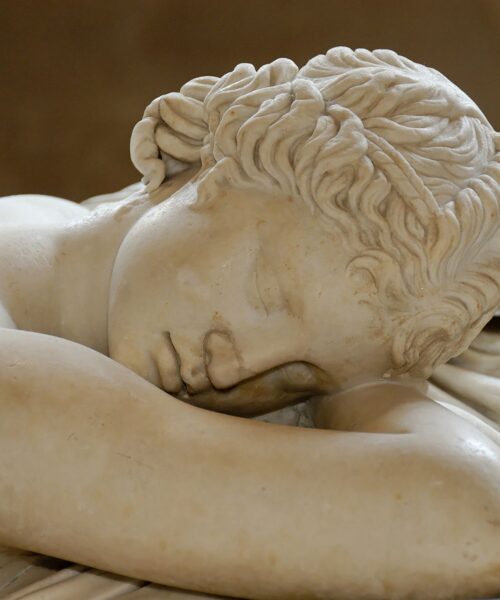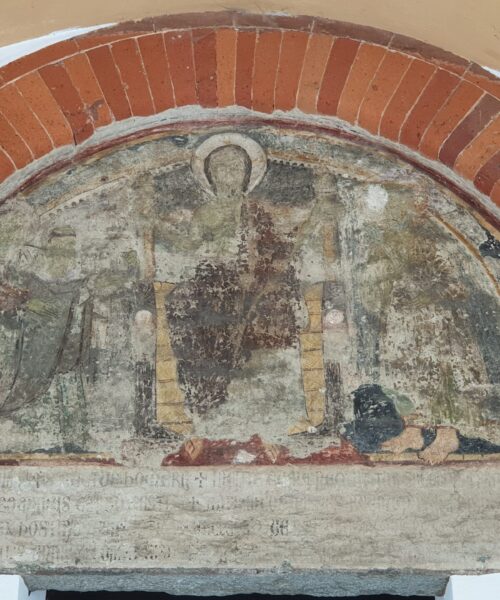Giuseppe Pellizza da Volpedo’s (1868-1907) painting “The Fourth Estate” is undoubtedly one of the most iconic works of Italian art, but it is not the only masterpiece deserving of discovery in the painter’s rich repertoire. Among Pellizza’s hidden treasures is certainly “The Holy Family,” a painting of extraordinary craftsmanship and emotional intensity, despite remaining unfinished.
An Unfinished Masterpiece Laden with Emotion
Created in 1892, this painting stands out for its bold and innovative choice to represent sacred figures in a human and earthly manner. Pellizza opted for the absence of halos and used sanguine strokes to outline the figures, decisions that did not meet the favor of the commissioner. The sacred subject, exceptional in Pellizza’s artistic journey, was specifically commissioned, but the final result diverged significantly from the conventional religious representations of the time.
Teresa, the Peasant Madonna
The painter chose his beloved wife, Teresa, a woman of humble peasant origins, as the model for the Madonna. This choice, emphasizing humanity and daily reality rather than the traditional regality associated with the figure of Mary, caused conflict within Pellizza’s wealthy family. The depiction of Mary, devoid of usual sacrality, instead appears full of palpable sweetness and a deep awareness of the destiny awaiting her son. Her direct gaze at the viewer conveys all the drama of a mother aware of future challenges.
Giuseppe, a Subtle Presence
The figure of Joseph is also characterized by an intense expression of sadness. Depicted discreetly and almost in the background, Joseph embodies the role of a paternal figure who is present but not dominant, essential but not intrusive, in a narrative that underscores his supportive importance.
A Treasure of Italian Divisionism
The painting is currently housed in the Pinacoteca Fondazione Cassa di Risparmio di Tortona, located in the Divisionism Museum of Tortona. This museum, renowned for its excellent collection of Divisionist works, offers a unique overview of the artistic period and the works of Pellizza da Volpedo. Expert guides and detailed catalogs further enrich the experience, providing valuable insights into the exhibited works.
Importance and Visibility
Although “The Holy Family” remains less known compared to “The Fourth Estate,” this work deserves greater attention and visibility. It represents a lesser-explored but equally significant aspect of Pellizza’s oeuvre, that of religious themes, which stands out for its ability to evoke deep emotions and its innovative depiction of sacred figures.

